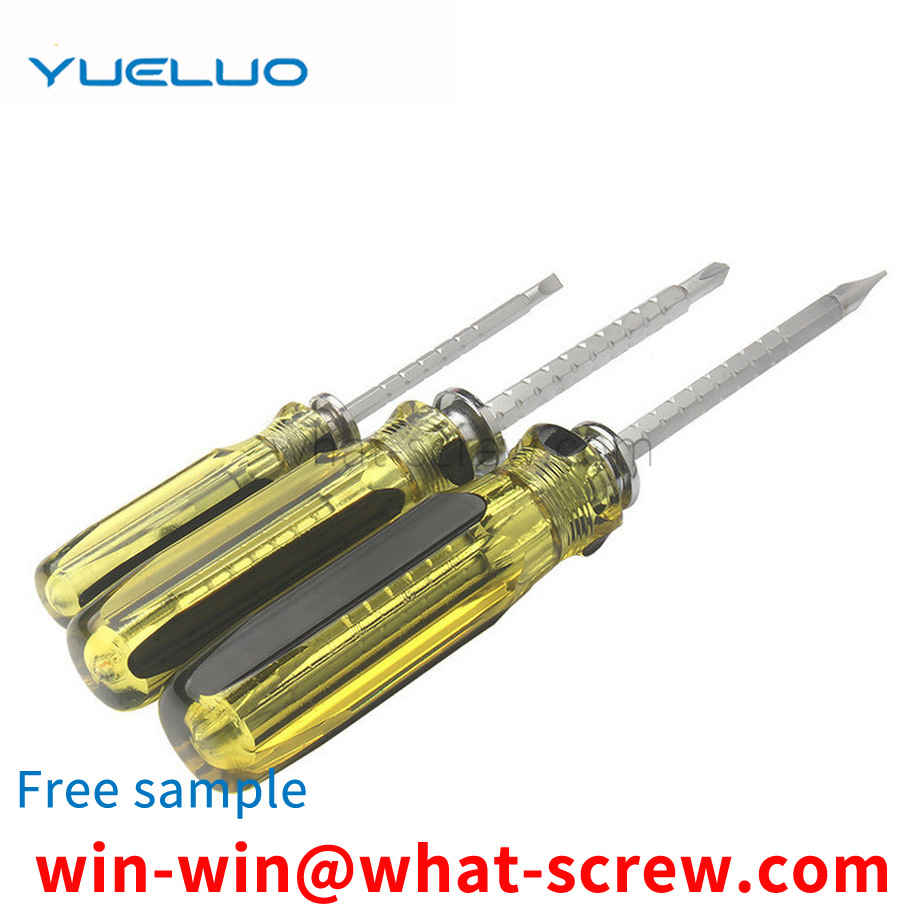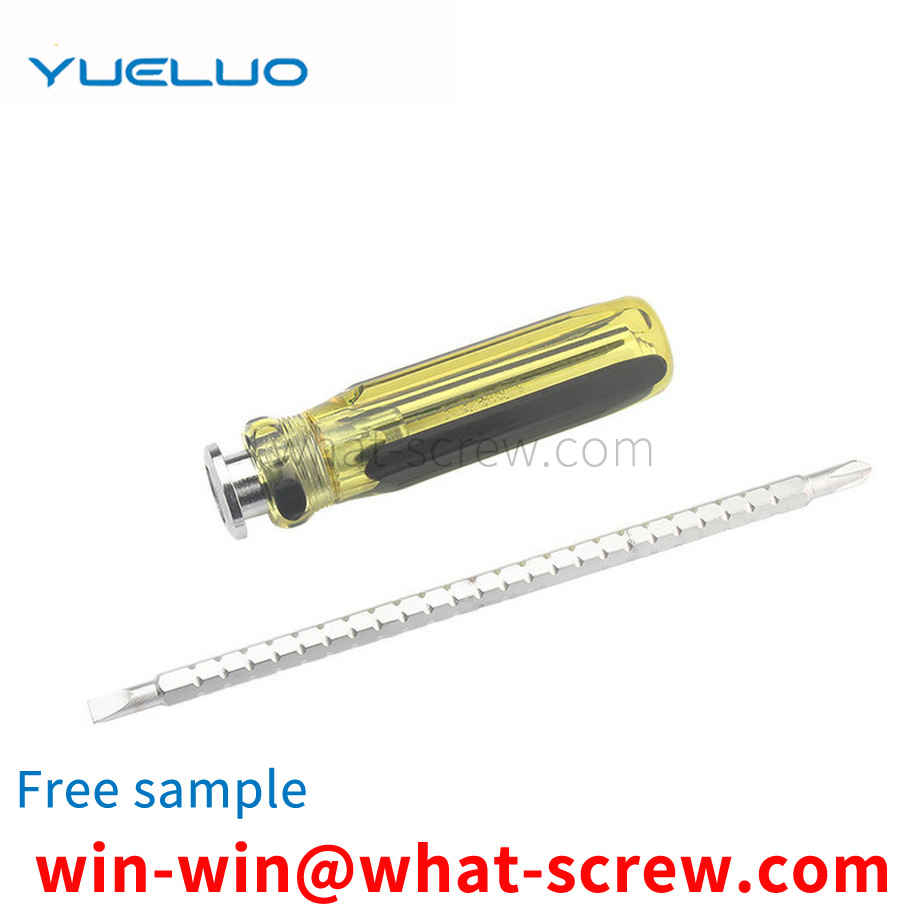Countersunk head, half countersunk head, 1200 countersunk head, half countersunk head rivets are mainly used for riveting occasions where the surface needs to be smooth and the load is not large. Flat head rivets are used for riveting occasions subject to general loads. Flat head and flat head rivets are mainly used for riveting of metal sheets or non-metallic materials such as leather, canvas and wood. Large flat head rivets are mainly used for riveting of non-metallic materials. Semi-hollow rivets are mainly used for riveting occasions with little load. Headless rivets are mainly used for riveting of non-metallic materials. Hollow rivets are light in weight and weak in head, and are used for riveting of non-metallic materials with little load. Tubular rivets are used for unloaded riveting of non-metallic materials. Nameplate rivets are mainly used for riveting nameplates on machines and equipment.
In another embodiment of Guangdong Yueluo Hardware Industry Co., Ltd., the discharge port of the vibrating plate 2 is matched with the screw receiving hole 35, and the screws can enter the screw receiving hole 35 through the discharge port after sorting and sorting in the vibrating plate 2. . Preferably, a guide rail 6 is provided between the discharge port of the vibrating plate 2 and the screw accommodating hole 35 , and the screws enter the screw accommodating hole 43 from the discharge port through the guide rail 6 . The slotting is carried out, which improves the efficiency and saves the labor cost.
A nut is a nut, a part that is screwed together with a bolt or screw for fastening. A component that must be used in all production and manufacturing machinery is divided into carbon steel, stainless steel, non-ferrous metals (such as copper), etc. several types.
The screw and nut disassembly and assembly tool of Yueluo also includes a rotating rod, a sleeve and a fixed rod fixedly connected to the sleeve rod at one end, and the other end of the fixed rod is connected with one end of the rotating rod to make the rotation The rod can be rotated around the connection point, and the sleeve for accommodating nuts or screws is fixedly connected with the other end of the rotating rod; rotating the rotating rod makes the sleeve head and the opening of the sleeve opposite , by keeping the nut or screw in the sleeve fixed while the corresponding screw or nut in the sleeve head rotates, so as to achieve simultaneous force and disassembly of the screw and the nut.
Stainless steel screws are classified into austenitic stainless steel, ferritic stainless steel, martensitic stainless steel, and precipitation hardening stainless steel. The selection of stainless steel screws is also based on principles. Where to start, let you choose the stainless steel screws you need. After comprehensive and comprehensive consideration of these five aspects, the grades, varieties, specifications and material standards of stainless steel screws are finally determined. Austenitic stainless steel: the most basic alloying elements of austenitic stainless steel are chromium and nickel. The grade is a chromium-nickel austenitic stainless steel with a chromium content of about 18% and a nickel content of about 8%, often called 18-8 stainless steel. The element ratio of chromium and nickel basically ensures that the structure of the steel is stable austenitic ferritic stainless steel: 430 type ordinary chromium steel, its corrosion resistance and heat resistance are better than 410 type, magnetic, but it It cannot be strengthened by heat treatment, and is suitable for stainless steel screws with slightly higher corrosion resistance and heat resistance and general strength requirements. Martensitic stainless steel: Type 410 and 416 can be strengthened by heat treatment, with a hardness of 35 to 45HRC, and good machinability. They are used for general-purpose heat-resistant and corrosion-resistant stainless steel screws. Type 416 has a slightly higher sulfur content and is a free-cutting stainless steel. Type 420, sulfur content? R0.15%, improved mechanical properties, can be strengthened by heat treatment, maximum hardness value of 53 ~ 58HRC, used for stainless steel screws requiring higher strength. Precipitation hardening stainless steel: 17-4PH, PH15-7Mo, they can get higher strength than the usual 18-8 type stainless steel, so they are used for high-strength, corrosion-resistant stainless steel stainless steel screws. A-286, a non-standard stainless steel, has higher corrosion resistance than commonly used Type 18-8 stainless steels, as well as good mechanical properties at elevated temperatures. Used as high-strength, heat-resistant, corrosion-resistant stainless steel screws, can be used to 650 ~ 700 ℃. Austenitic stainless steel: The commonly used models are 302, 303, 304, and 305, which are the so-called 18-8 austenitic stainless steels. Both corrosion resistance and mechanical properties are similar. The starting point of selection is the production process method of stainless steel screws, and the method depends on the size and shape of stainless steel screws, and also depends on the quantity of production. Type 302 is used for machined screws and self-tapping bolts. Type 303 In order to improve machinability, Type 303 stainless steel is added with a small amount of sulfur and is used to machine nuts from bar stock. Type 304 is suitable for hot heading stainless steel screws, such as longer gauge bolts, large diameter bolts, which may be beyond the scope of the cold heading process. Type 305 is suitable for cold heading processing of stainless steel screws, such as cold formed nuts, hex bolts. Type 309 and Type 310, their Cr content and Ni content are higher than 18-8 type stainless steel, suitable for stainless steel screws working at high temperature. Types 316 and 317, both of which contain the alloying element Mo, have higher high temperature strength and corrosion resistance than 18-8 type stainless steel. Type 321 and Type 347, Type 321 contains a relatively stable alloying element Ti, Type 347 contains Nb, which improves the intergranular corrosion resistance of the material. It is suitable for stainless steel standard parts that are not annealed after welding or serve at 420~1013℃.
We have many years of experience in the production and sales of screws, nuts, flat washers, etc. The main products are: color-plated washers, copper posts for children's cars, slip-knot fisheye bolts, copper hex screws and other products, we can provide you with suitable products for you. Fastener Solutions.



















 Service Hotline
Service Hotline




